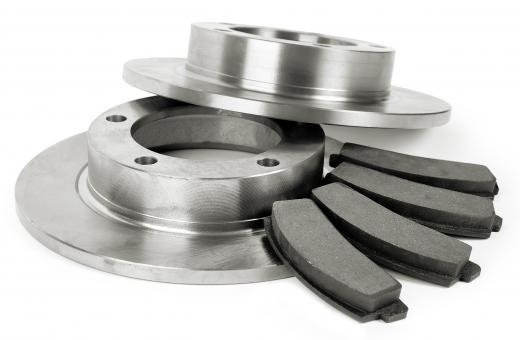What Are the Properties of Graphite?
Graphite is an allotrope of the element carbon, which means that it is one of a number of different forms of the pure element with a unique arrangement of its atoms, as compared to other forms of carbon. The arrangement of carbon atoms in graphite molecules gives this substance some unique properties. It can be used as a lubricant and has characteristics that are normally only attributed to metals. It is also similar, in some ways, to coal. This unusual combination of characteristics makes graphite suitable for a number of different applications.
The name for the substance graphite was coined by a German geologist in the 18th century who adapted the Greek word "grapho," meaning "to write" because of its use in pencils, a use which is still common today. In this application, graphite is often called "pencil lead" or "lead" but this is misleading, as it is not lead at all. Graphite is a naturally occurring mineral composed of pure elemental carbon.

The physical properties of graphite are very similar to coal. Its molecules are arranged in hexagon-shaped lattices that form sheet-like arrangements. It is this molecular configuration that contributes to graphite's excellent properties as a lubricant, both in a dry form and suspended in liquid, usually oil. It is one of the softest of all naturally occurring minerals and is easily scratched with a fingernail. It appears as a dark, silvery solid.

Like coal, to which it is chemically identical, graphite is sometimes found in large veins within certain metamorphic rocks, or as small scattered flakes within a variety of minerals. The properties of graphite however, make it unsuitable for use as a fuel, as it is very hard to burn. Likewise, graphite is chemically very stable and nearly inert.
One of the more interesting properties of graphite is its conductivity. Graphite conducts electricity, which is unusual for a substance that is not a metal, especially since at least one other elemental carbon allotrope, diamond, is not conductive at all and is in fact a very good insulator. It is not as conductive as a metal, however, and is sometimes classified as a semiconductor. Another of the interesting properties of graphite is its strong anisotropic properties of heat and sound conduction. This means that it conducts heat and sound in one direction very well while doing so poorly in other directions.
Science and industry have found many uses for graphite. Besides its applications as filler for pencils and a wide range of highly effective lubricants, the properties of graphite make it suitable for use in the manufacture of steel, light weight, high strength composite materials and as a component for composite brake pads, among numerous other uses. Its softness would seem to make it a strange choice for high strength composites like those used in skis and fishing poles, but while the flat sheet formations of its molecules make it soft, these sheets can be rolled and formed into fibers with enormous strength due to the powerful bonds between the individual atoms.
AS FEATURED ON:
AS FEATURED ON:












Discuss this Article
Post your comments